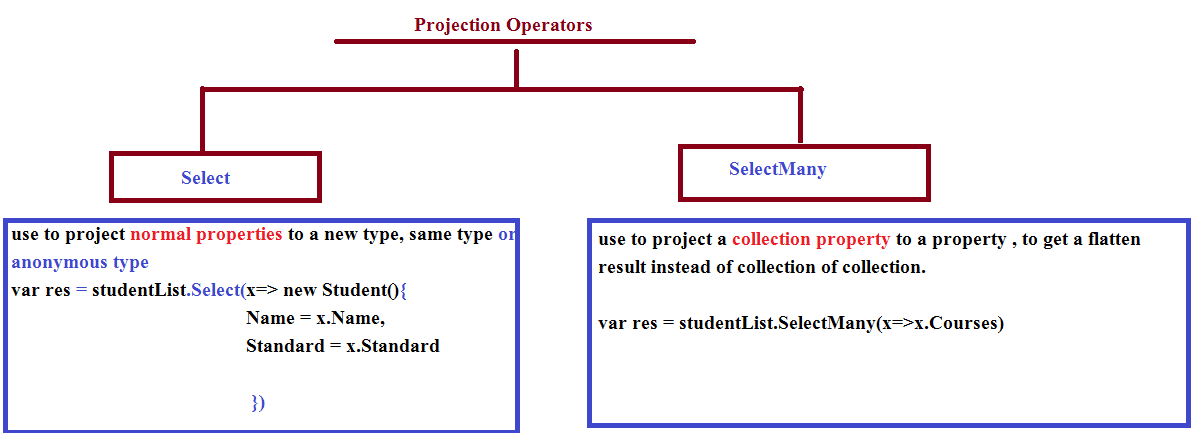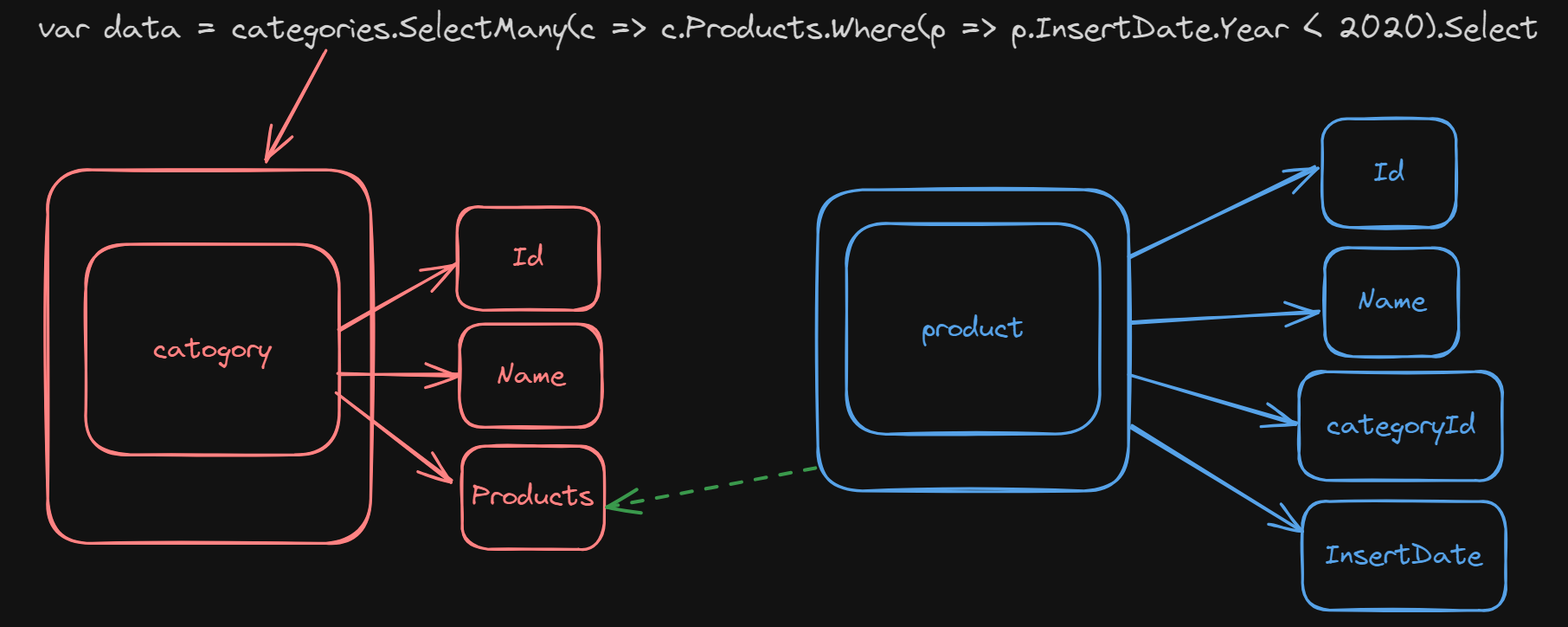 https://www.sharpencode.com/article/Linq/projection-operators
https://www.sharpencode.com/article/Linq/projection-operators

using System;
using System.Collections;
using System.Collections.Generic;
using System.Diagnostics.CodeAnalysis;
using System.Linq;
using System.Security.Cryptography;
namespace LinqProject
{
class Program
{
static void Main(string[] args)
{
List<Category> categories = new List<Category>()
{
new Category { Id =1 , Name="mobile" , Products = new List<Product>()
{
new Product { Id =1 , Name ="Iphone Se" , CategoryId = 1 , InsertDate= DateTime.Now.AddYears(-5)},
new Product { Id =2 , Name ="Sumsoung G8" , CategoryId = 1, InsertDate= DateTime.Now.AddYears(-8)},
}},
new Category { Id =2 , Name="Laptop" , Products = new List<Product> ()
{
new Product { Id =3 , Name ="Asus" , CategoryId = 2, InsertDate= DateTime.Now},
new Product { Id =3 , Name ="hp" , CategoryId = 2, InsertDate= DateTime.Now.AddYears(-15)}
}},
};
var data = categories.SelectMany(c => c.Products
.Where(p => p.InsertDate.Year < 2020)
.Select(s => new
{
Year = s.InsertDate.Year,
Productname = s.Name,
Category = c.Name,
}));
foreach (var item in data)
{ Console.WriteLine($"{item.Productname} {item.Category} {item.Year}");
}
Console.ReadLine();
} }
public class NewListdto
{
public int Id { get; set; }
public string Name { get; set; }
public string Category { get; set; }
}
public class Category
{
public int Id { get; set; }
public string Name { get; set; }
public List<Product> Products { get; set; }
}
public class Product
{
public int Id { get; set; }
public int CategoryId { get; set; }
public string Name { get; set; }
public DateTime InsertDate { get; set; }
}}